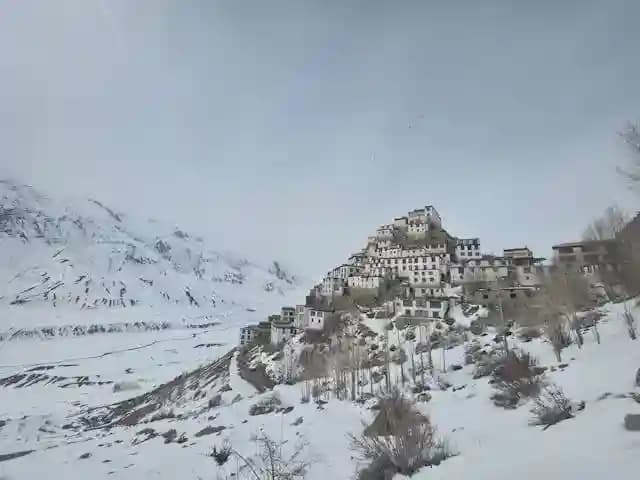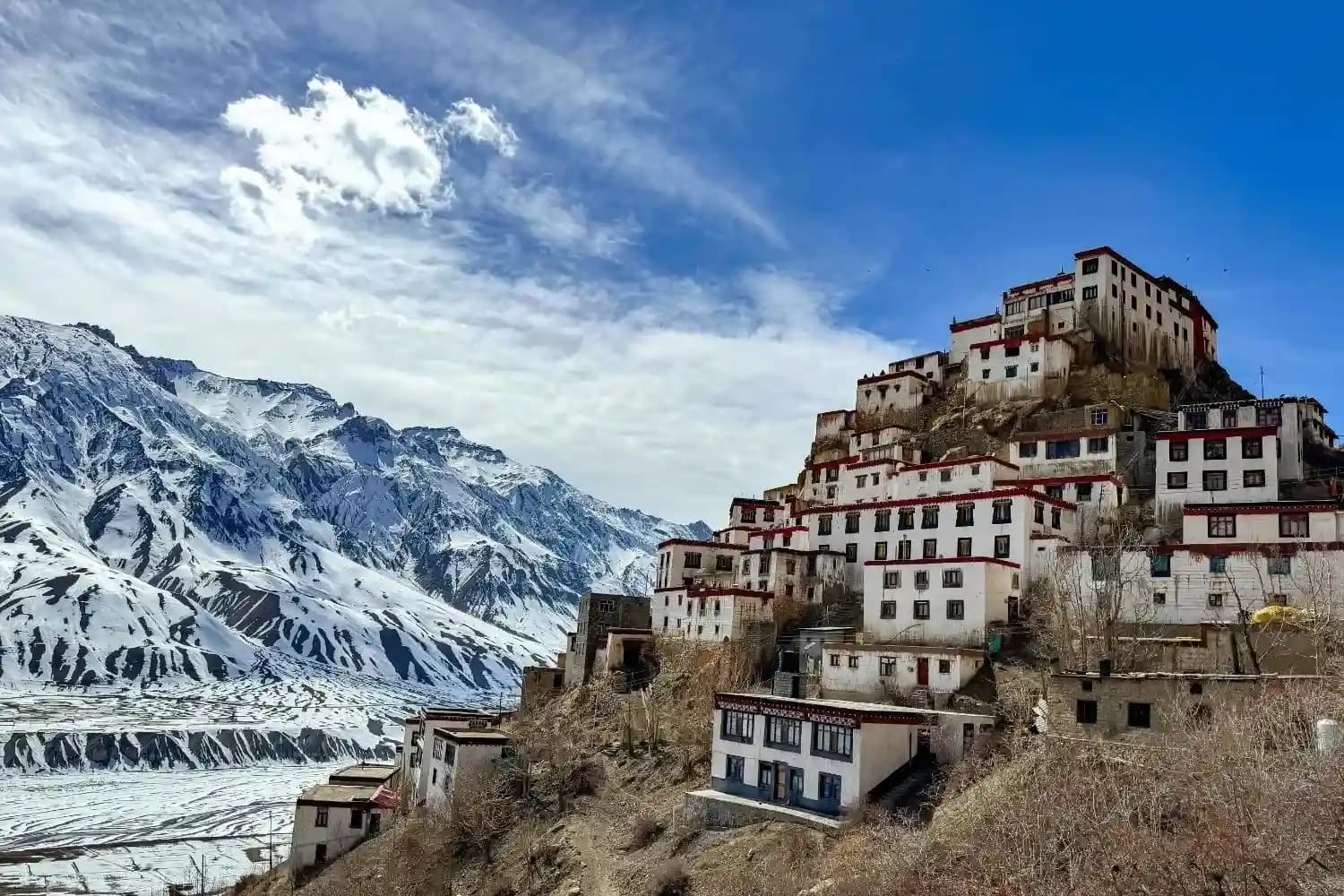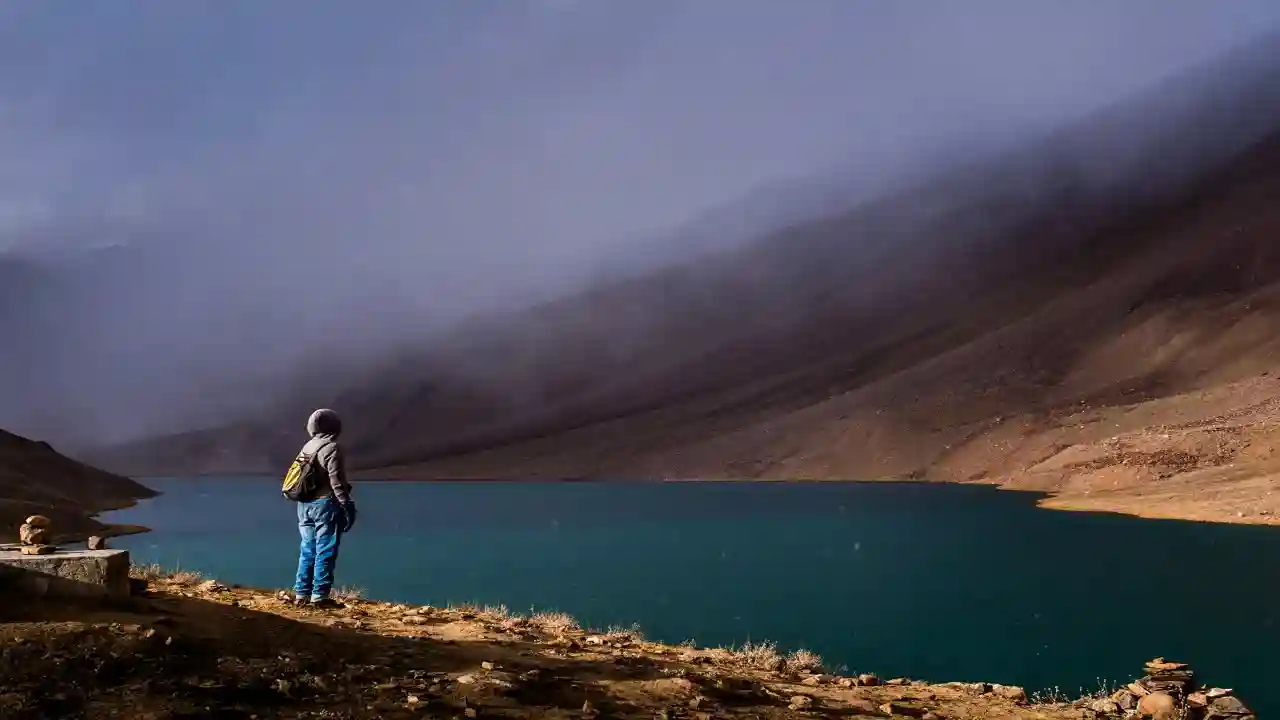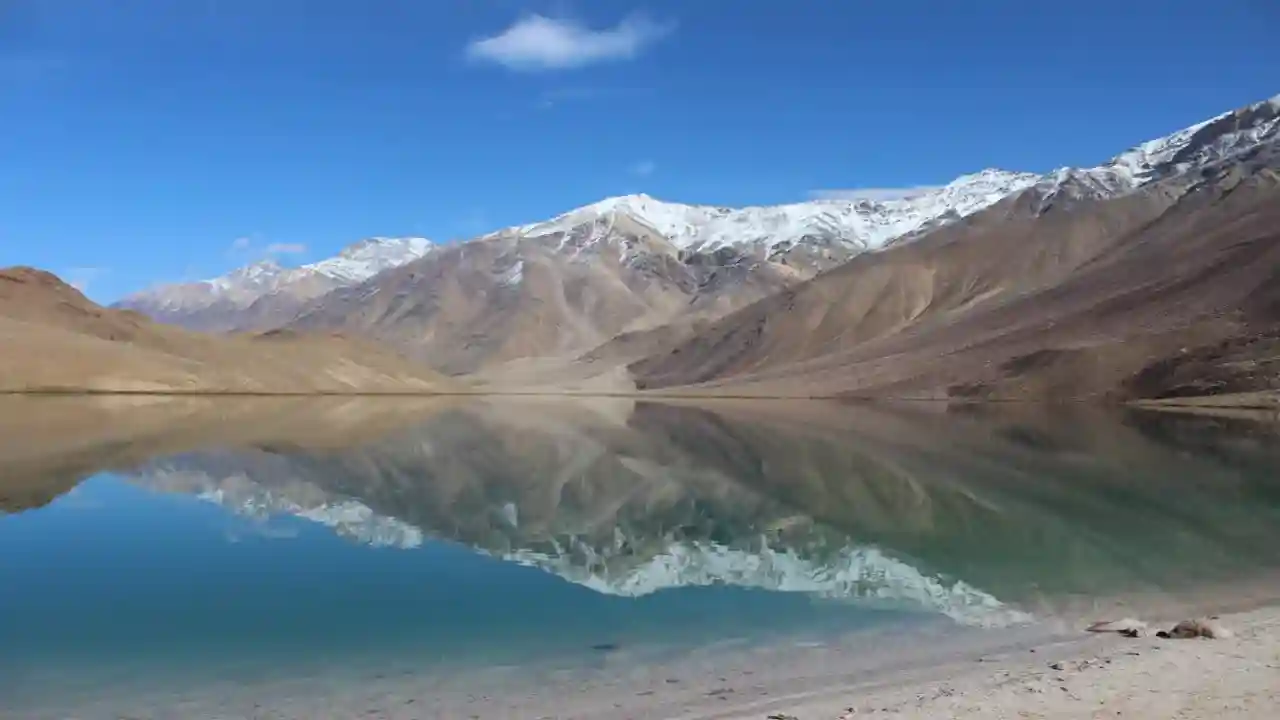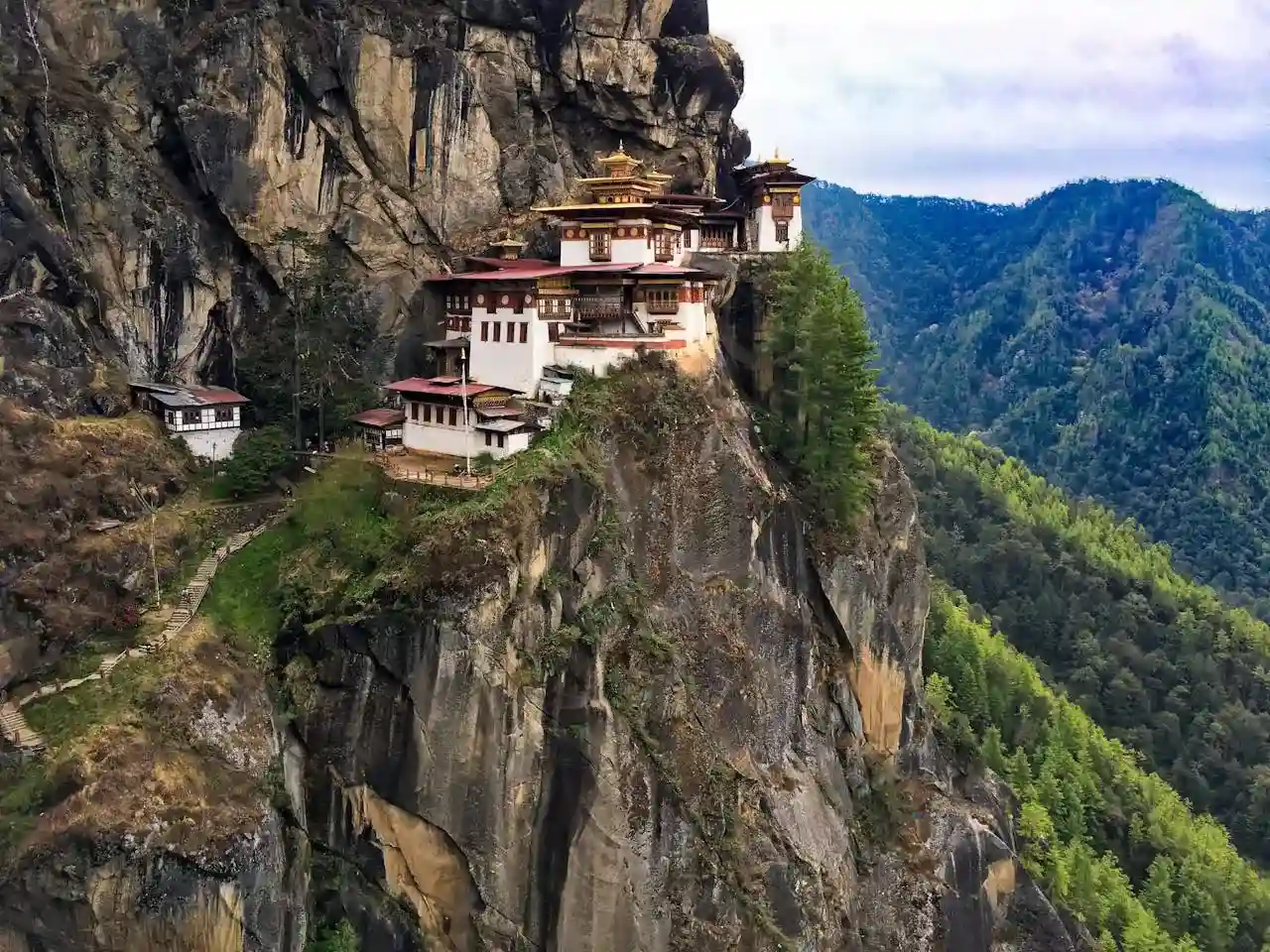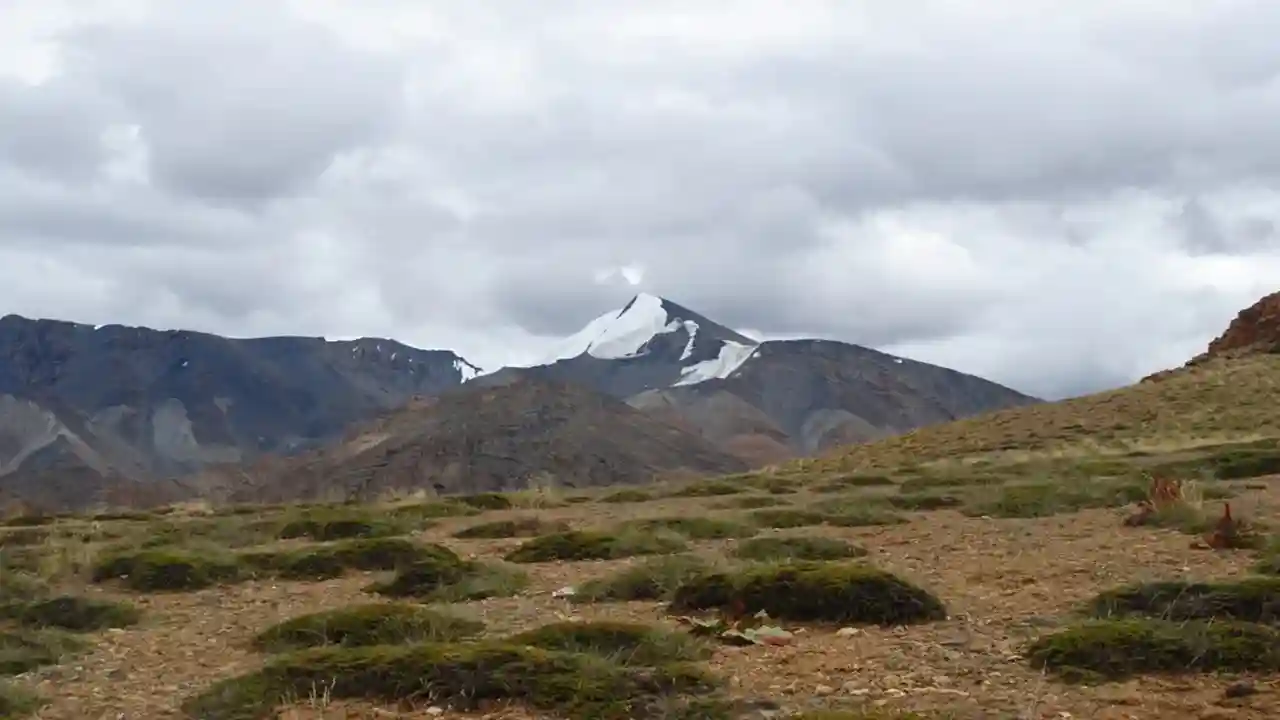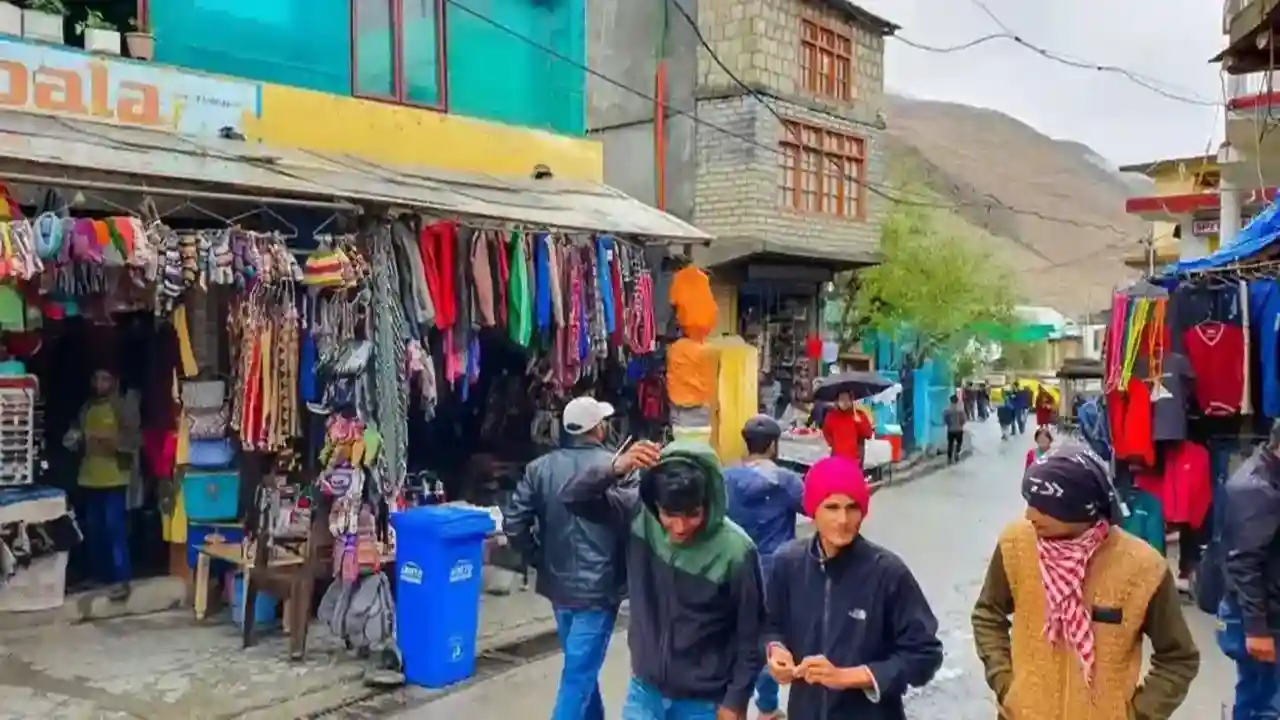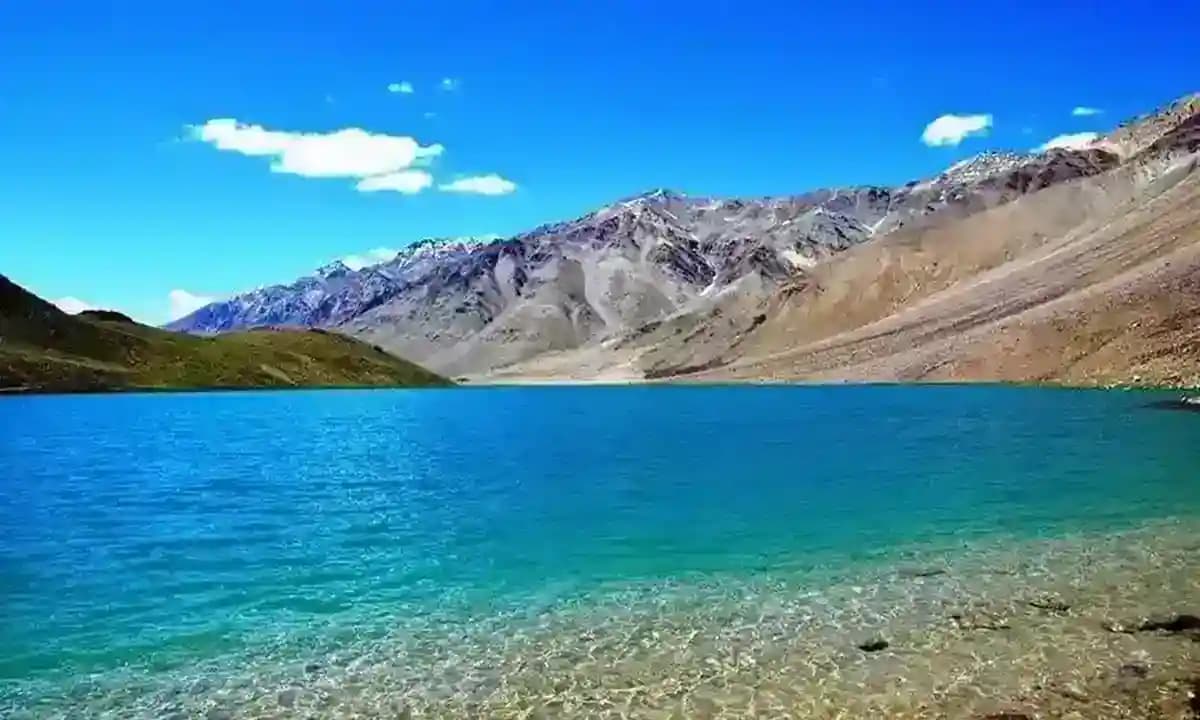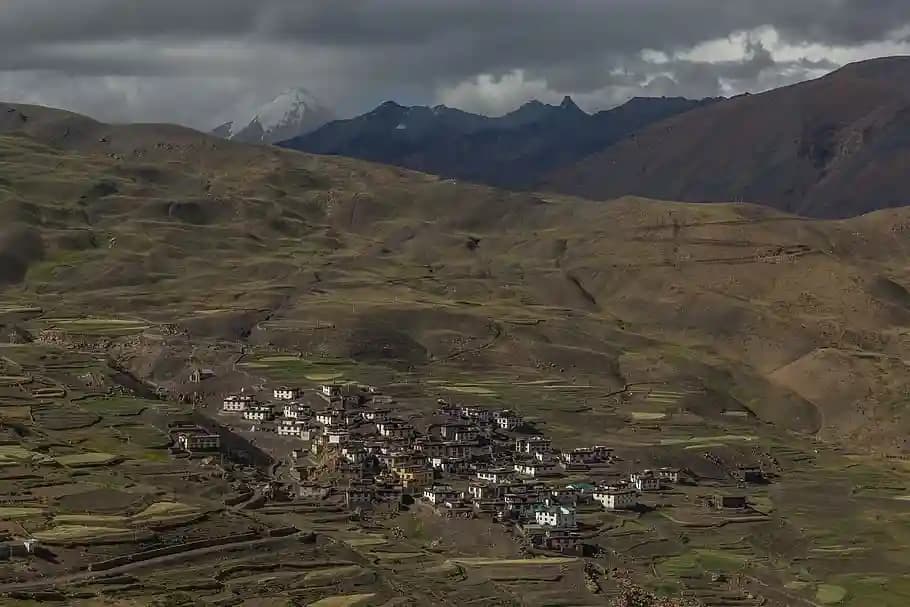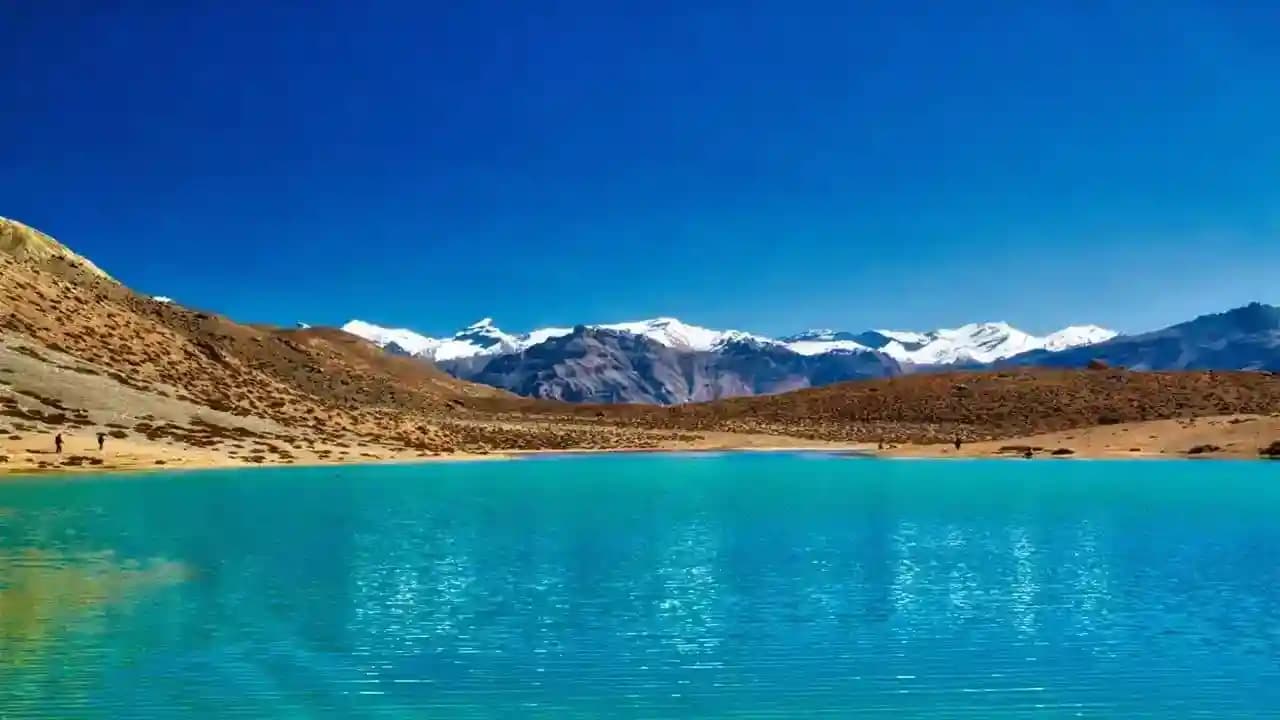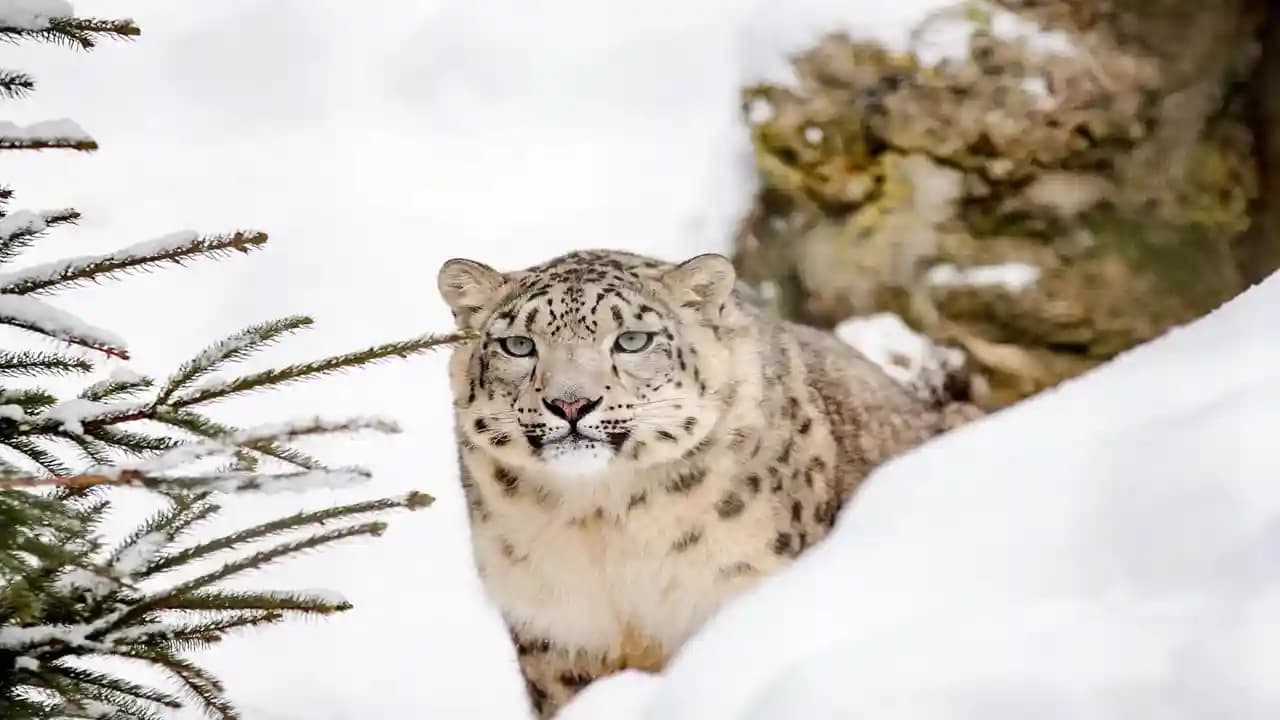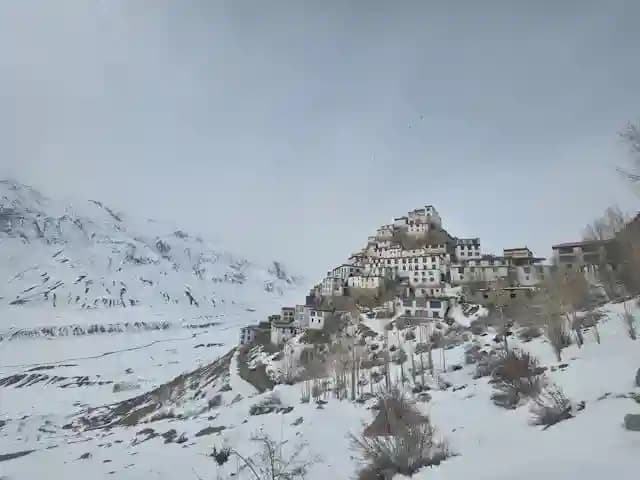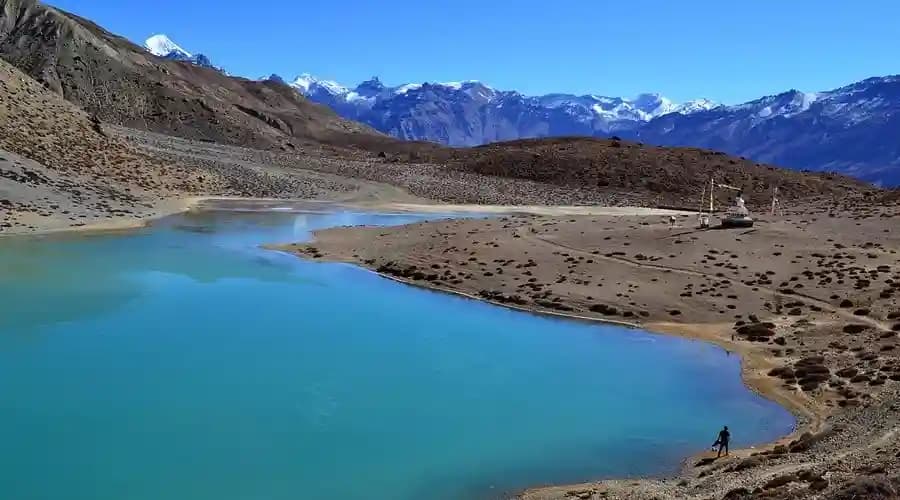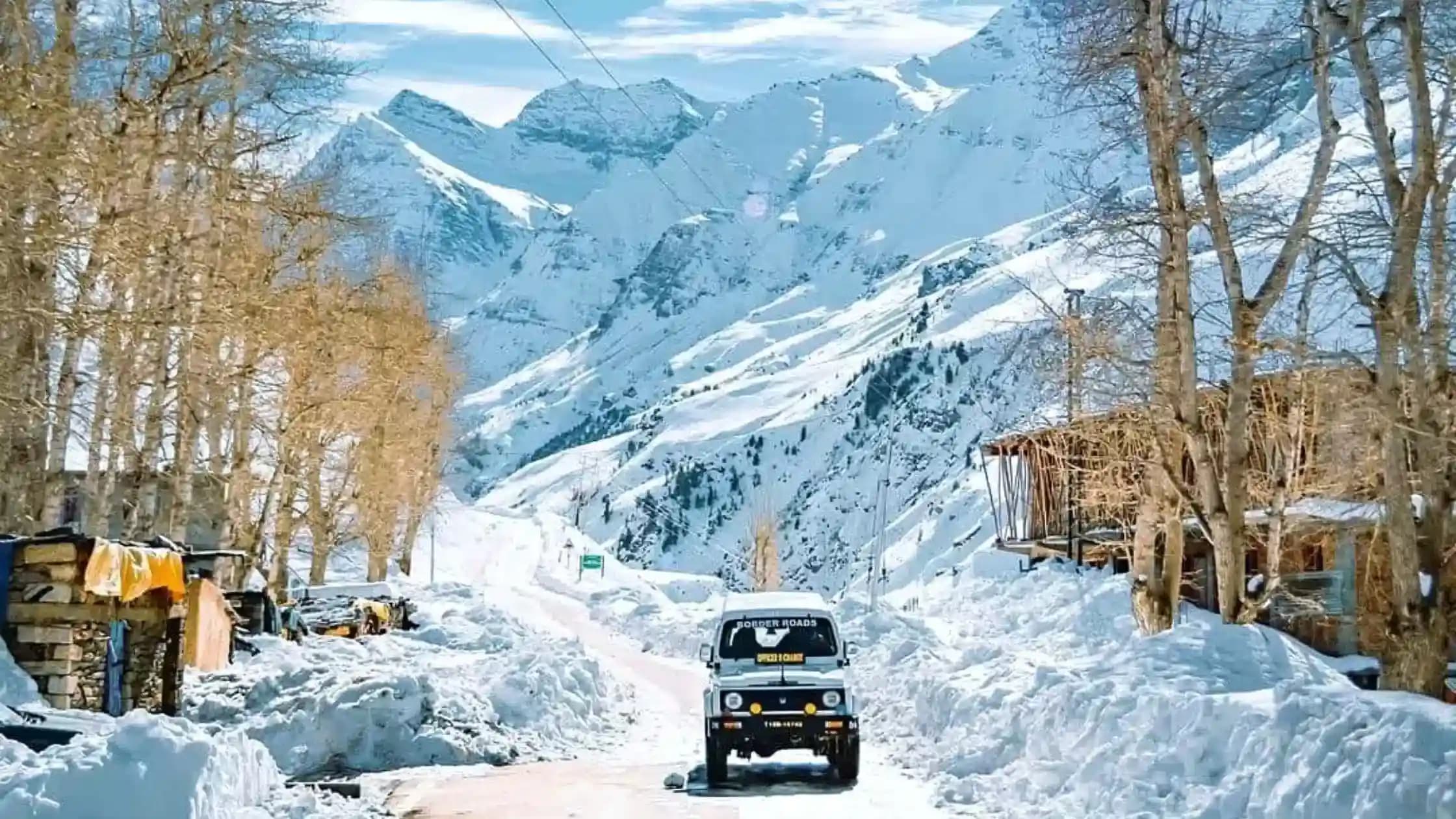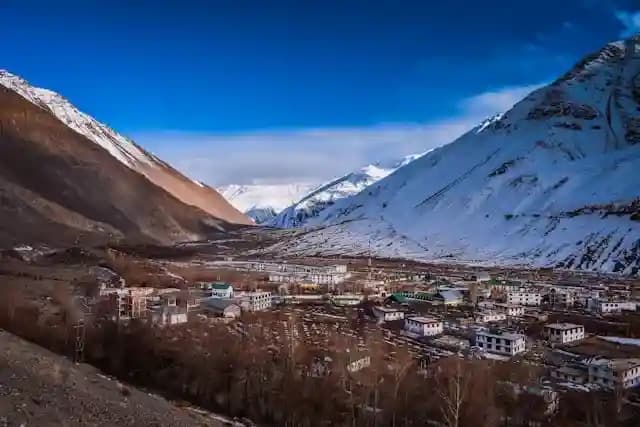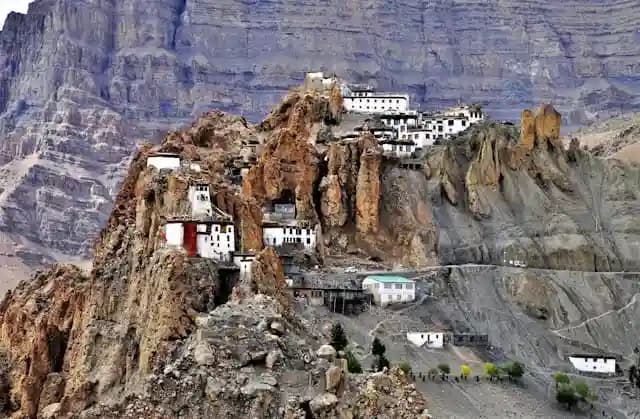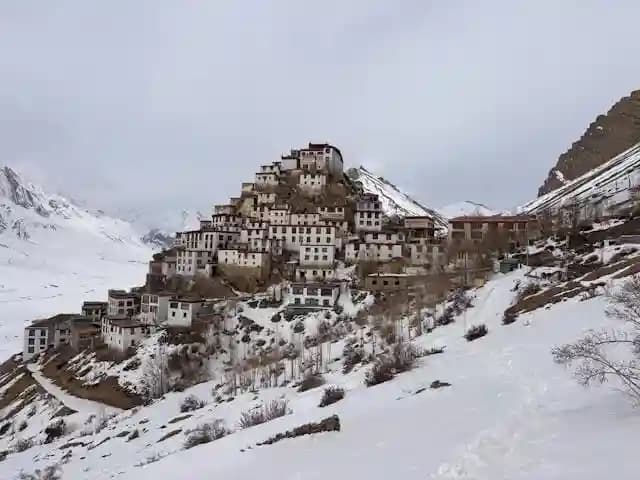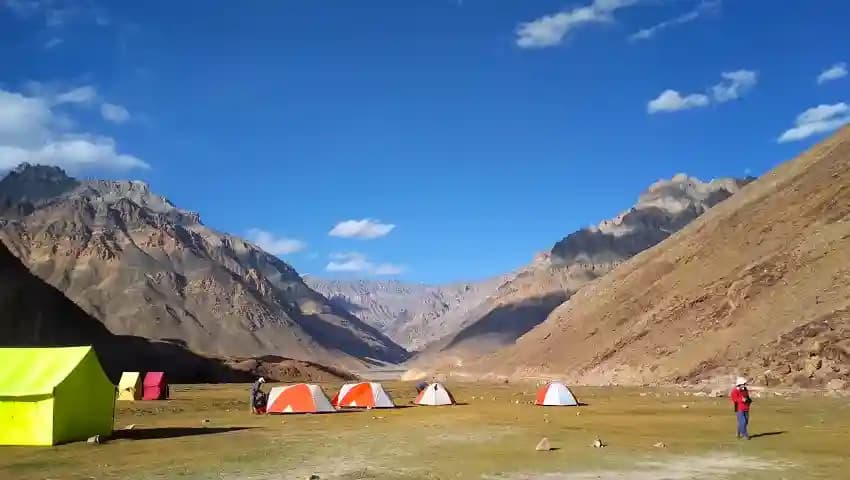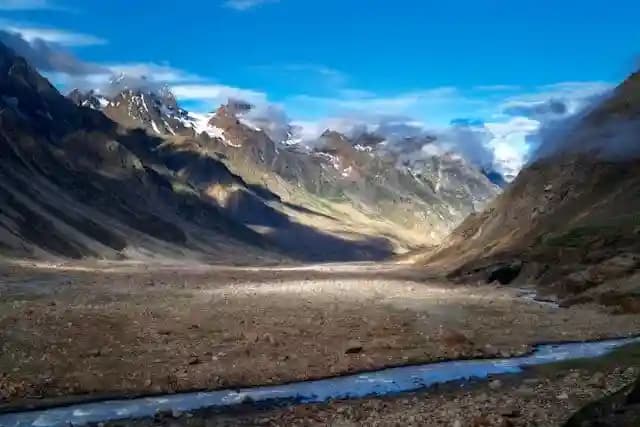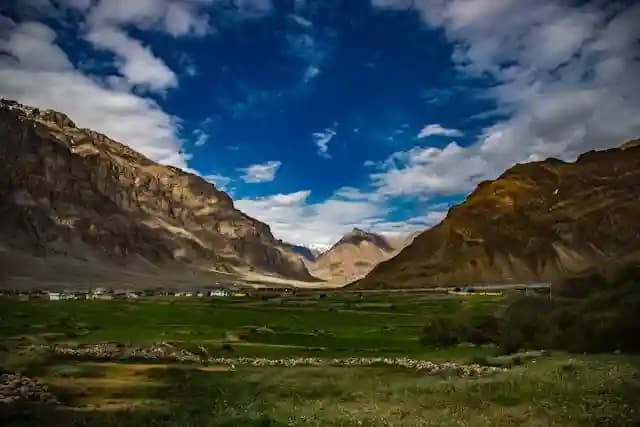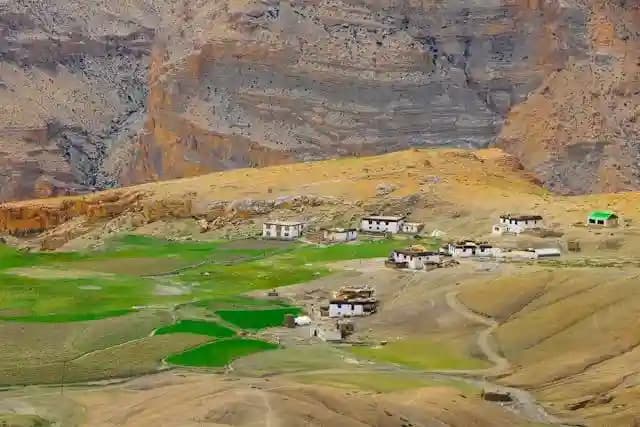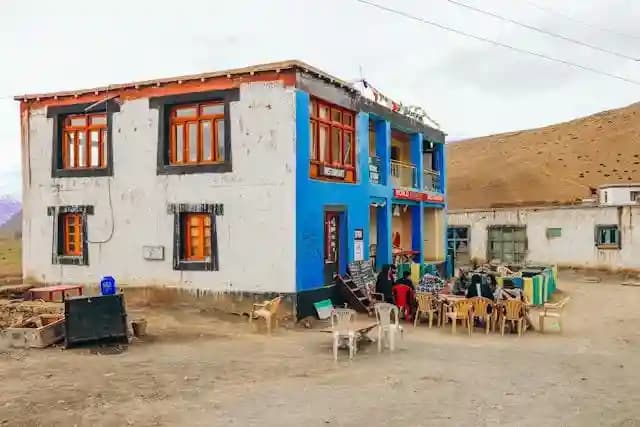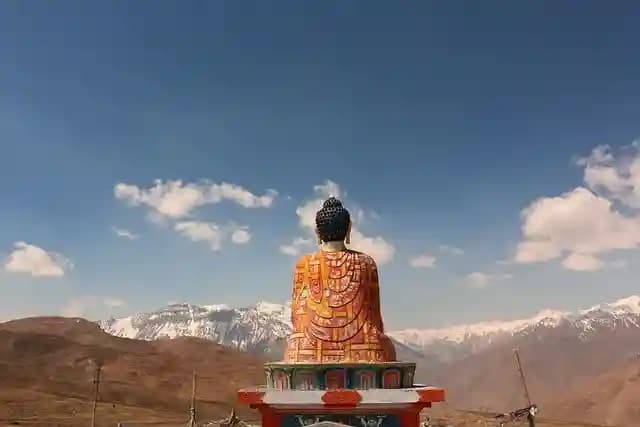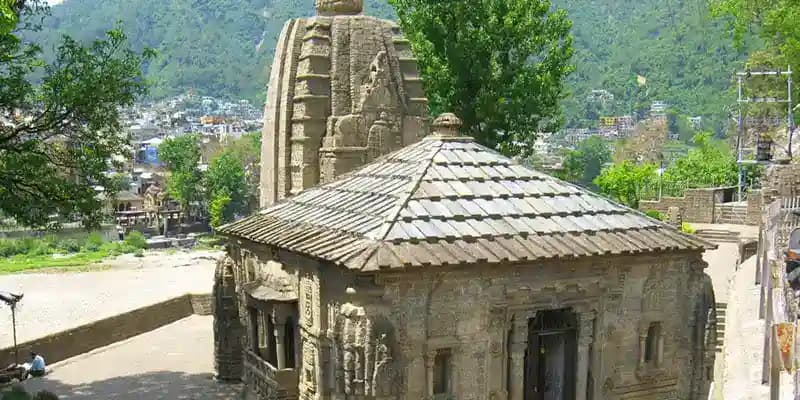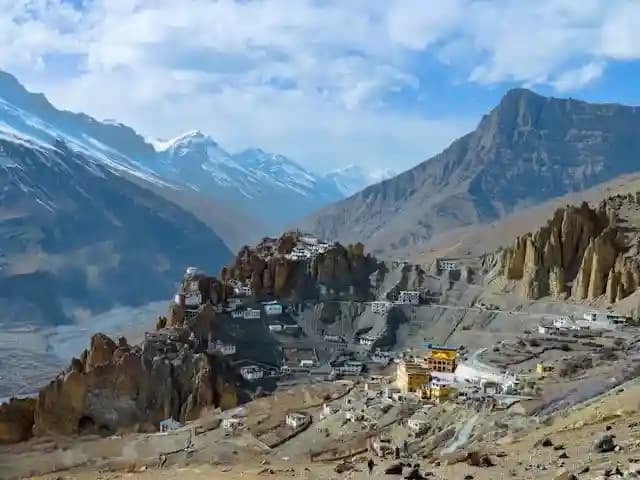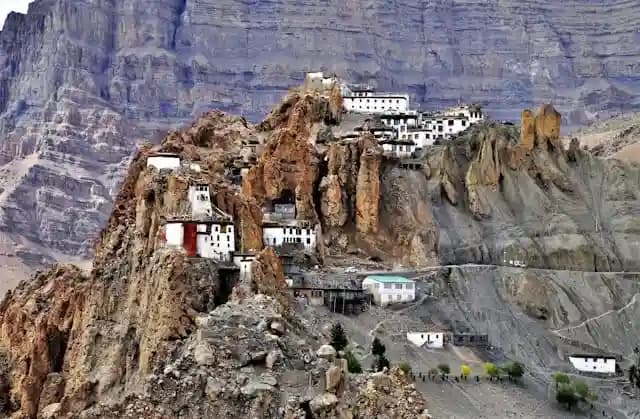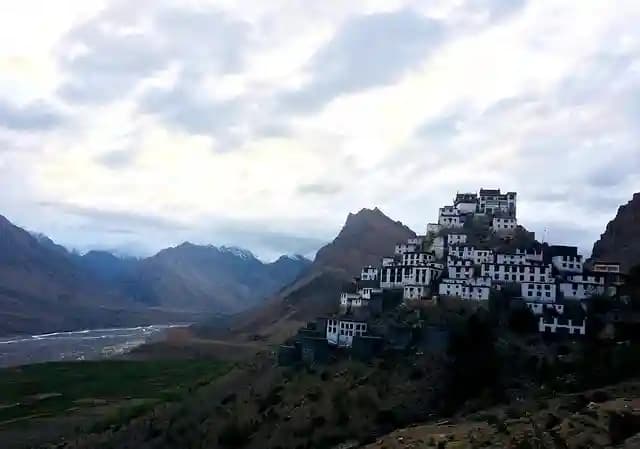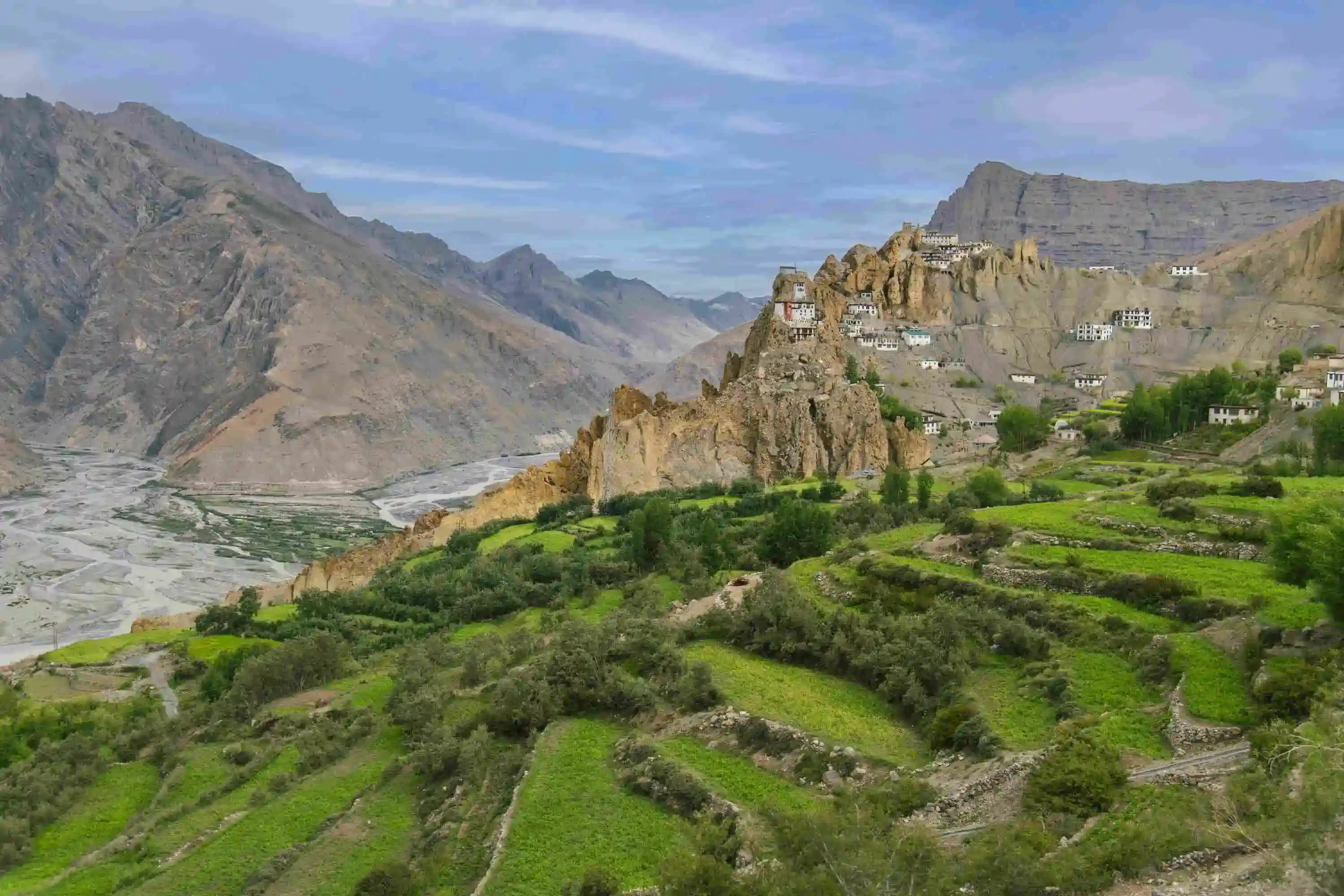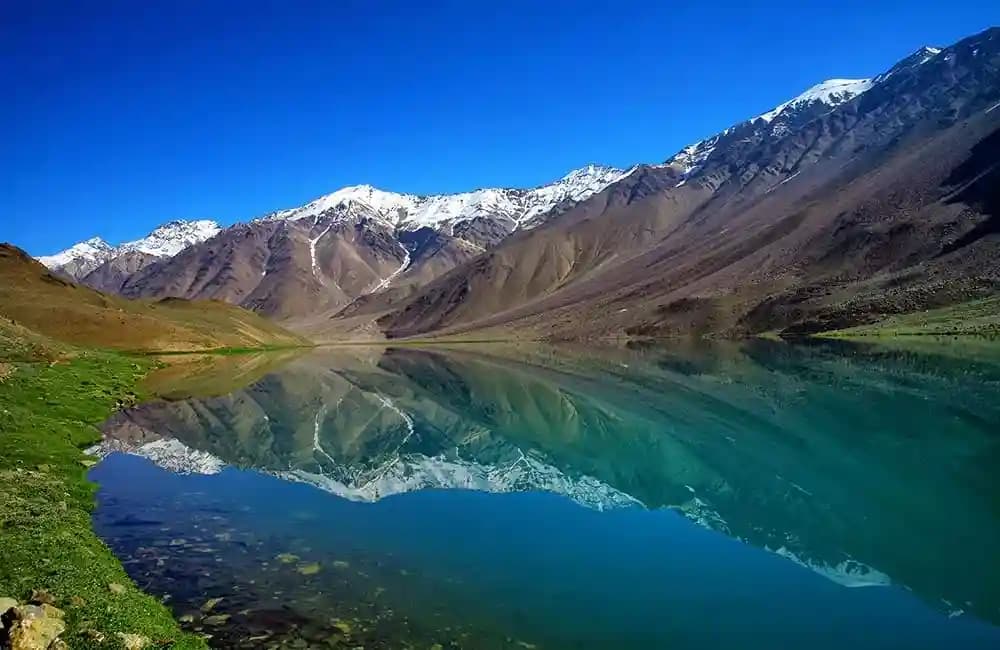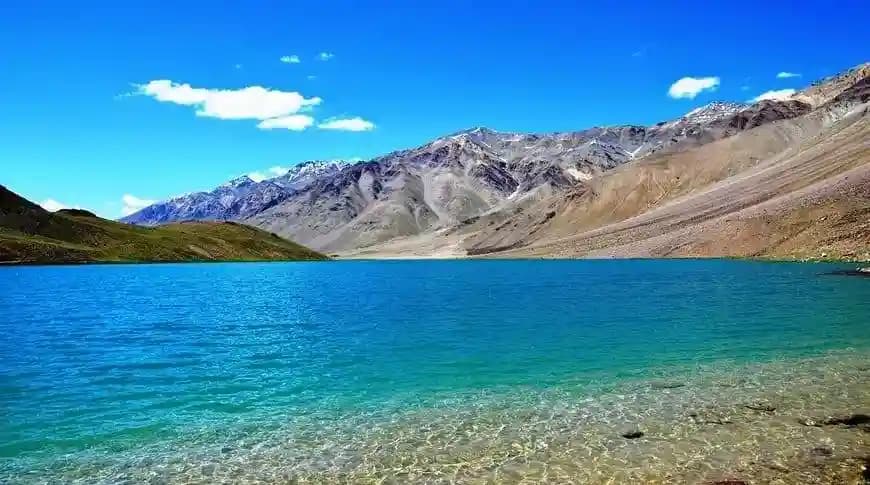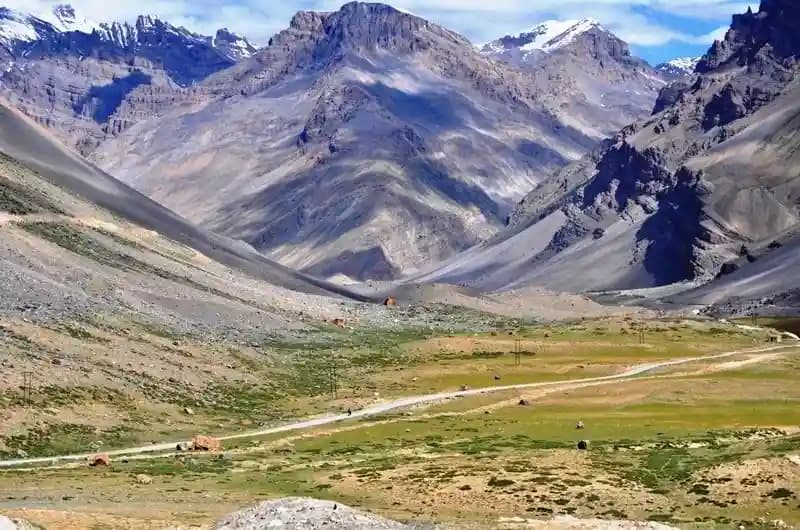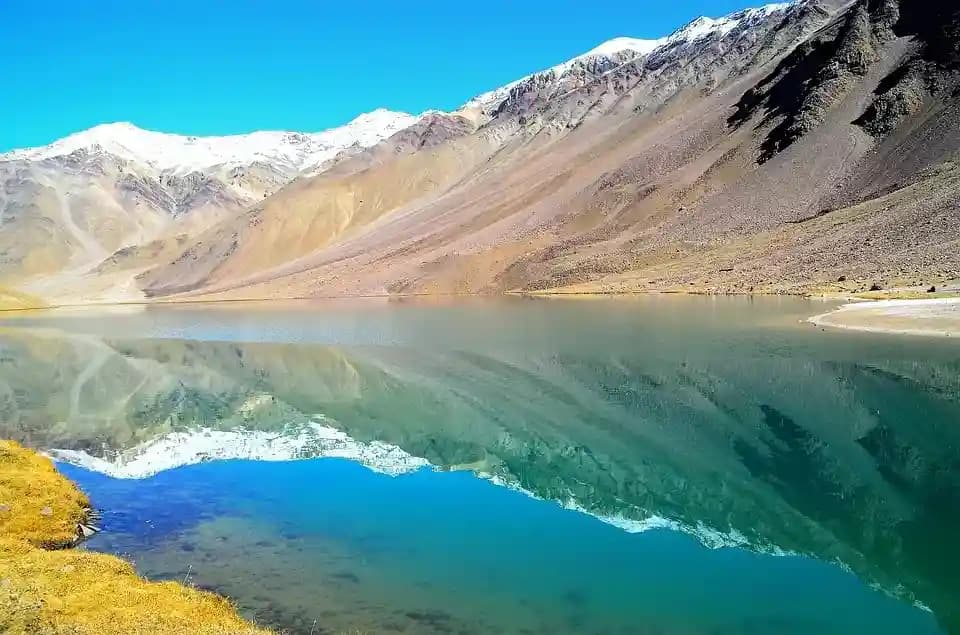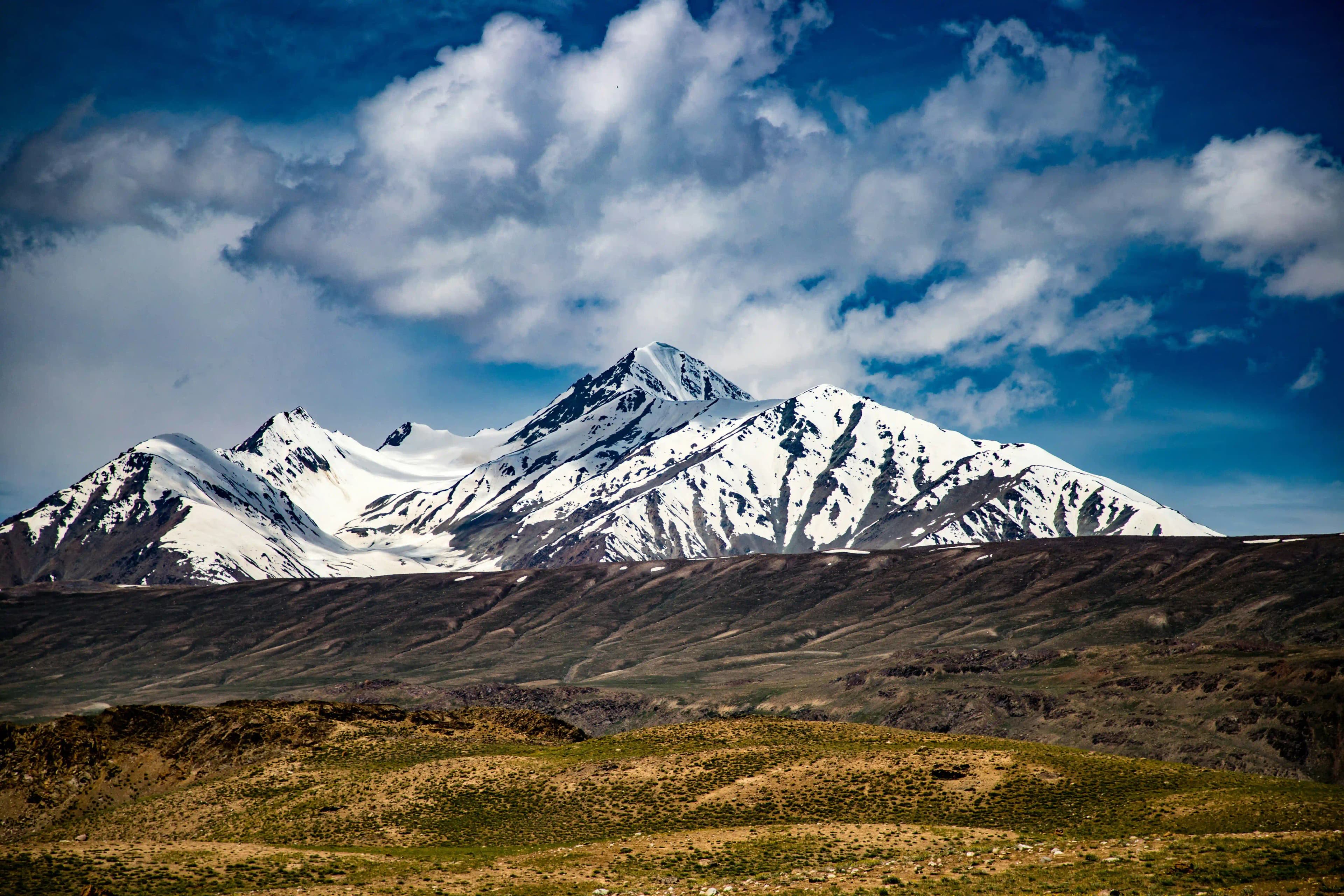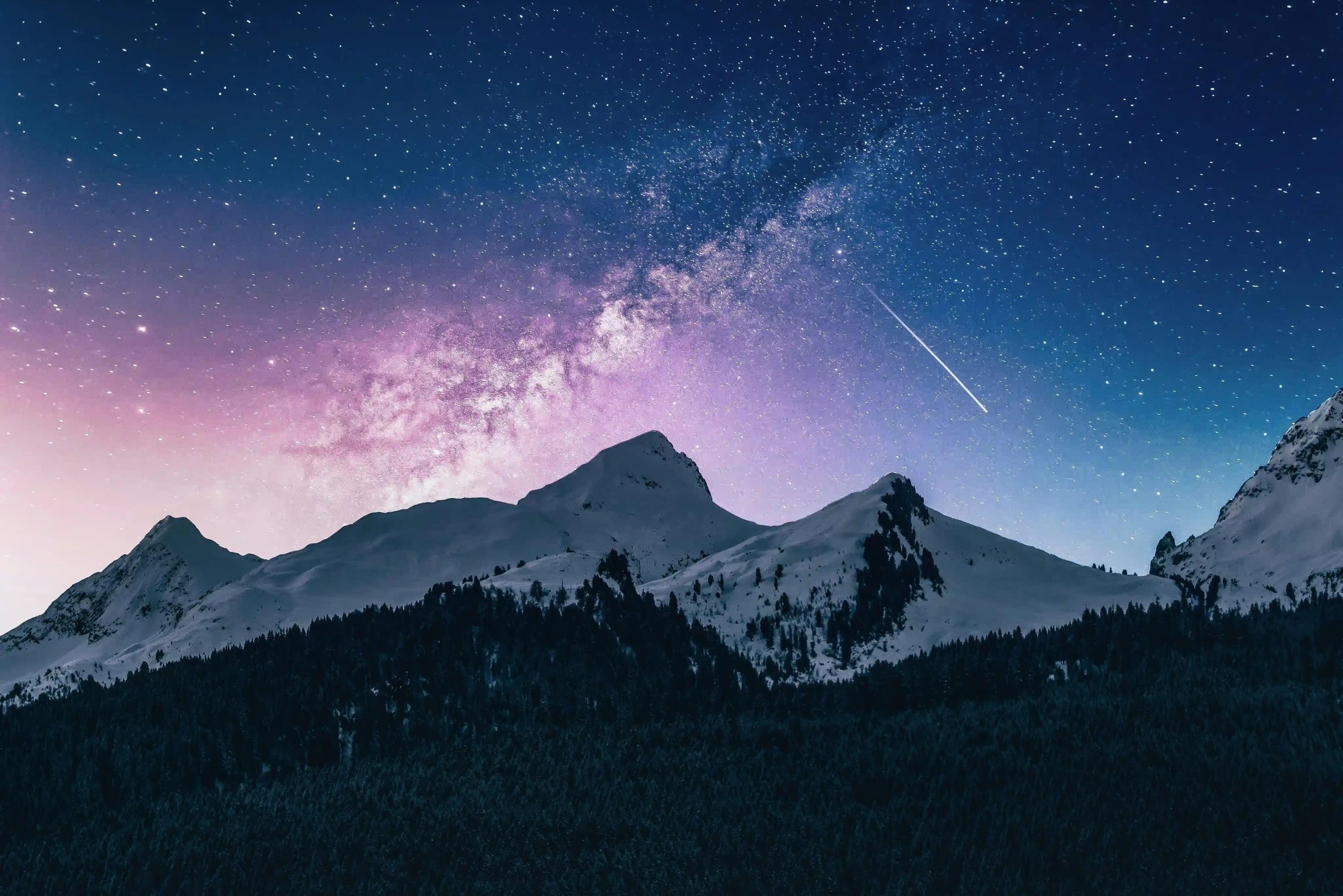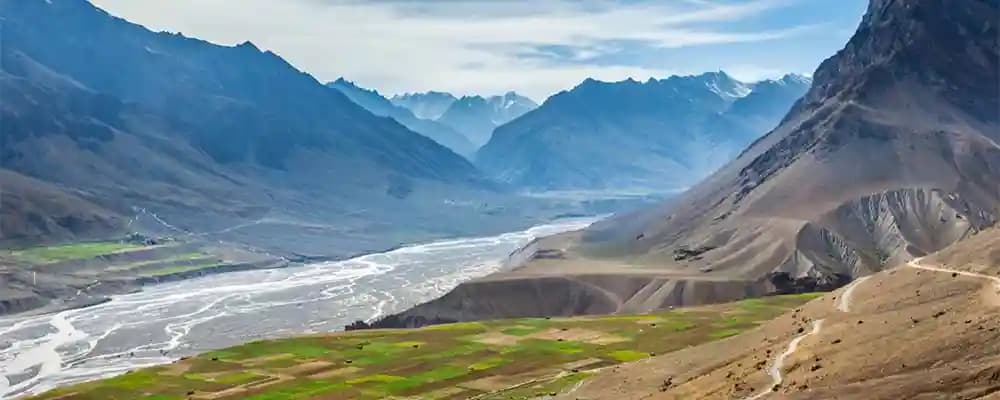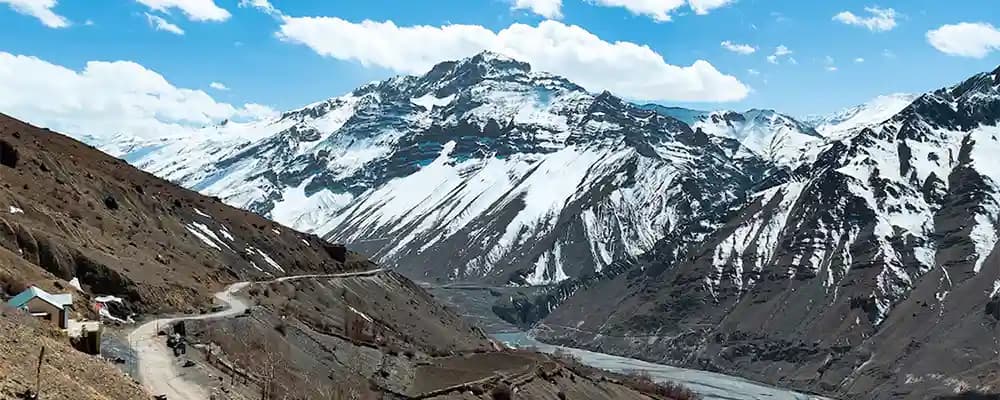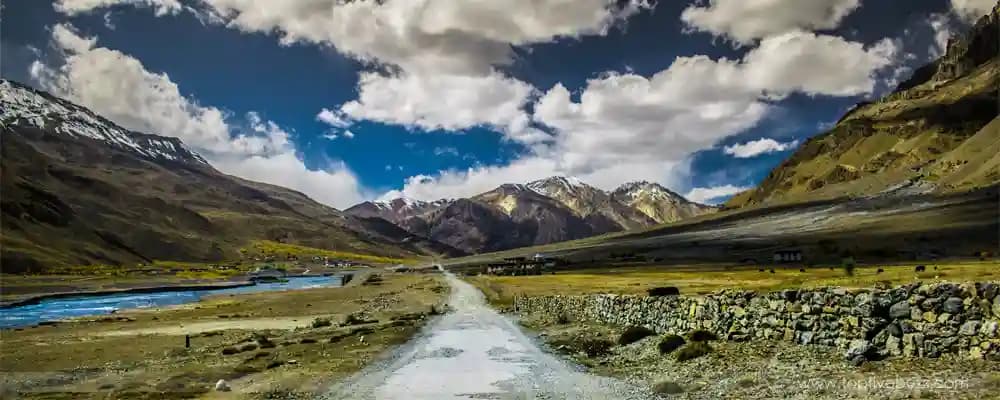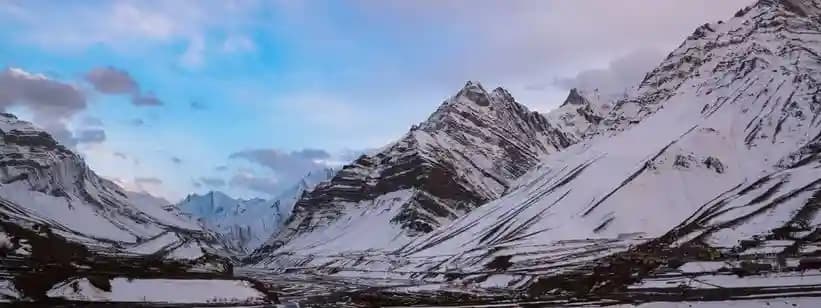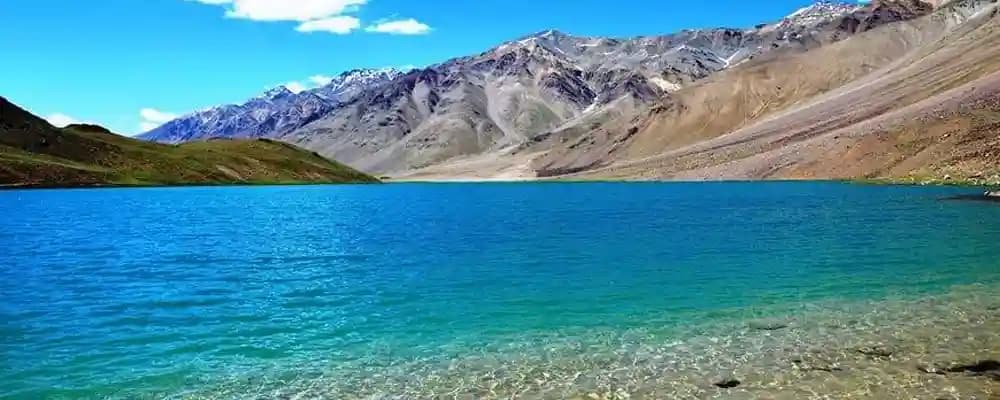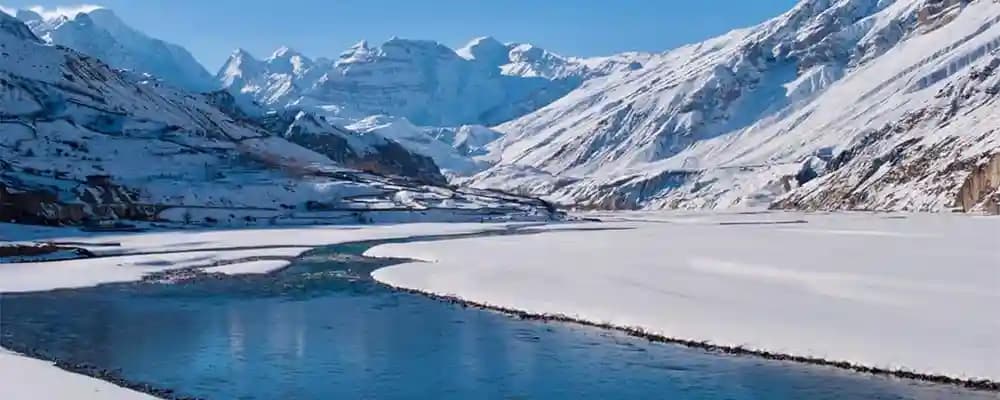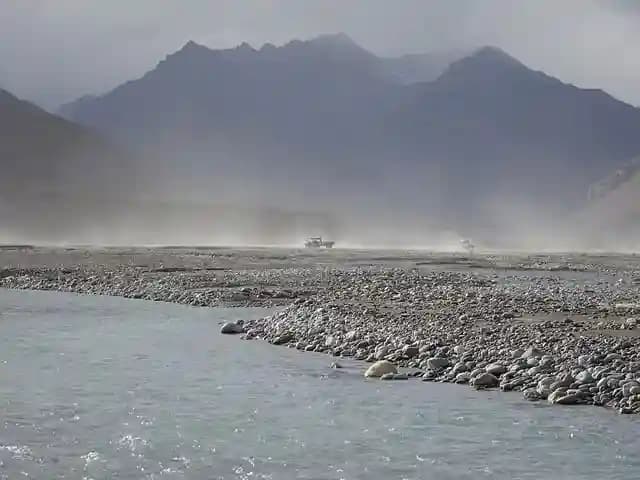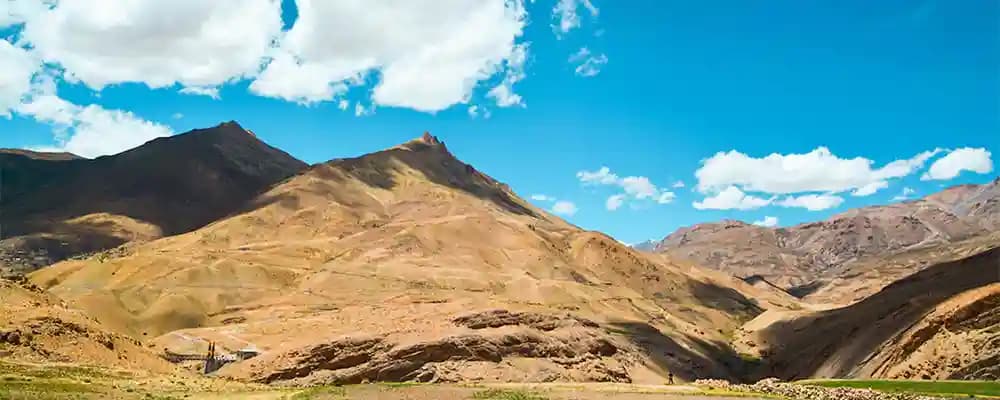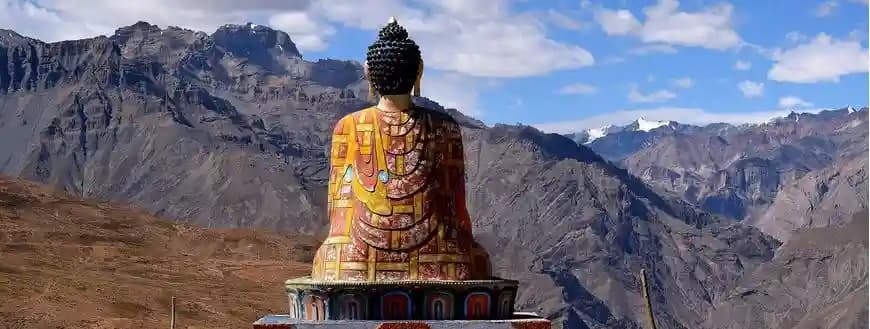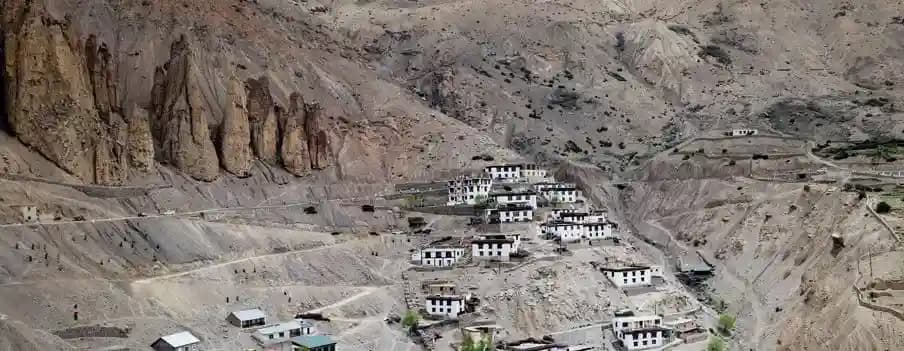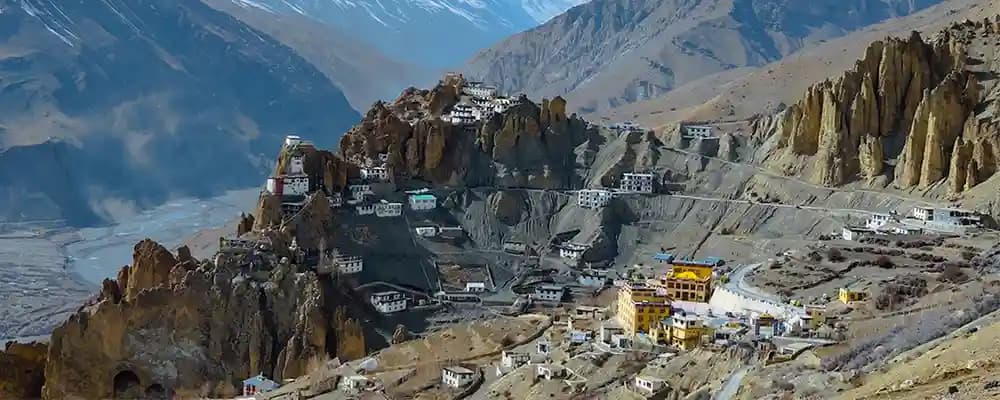Have you ever thought about visiting a place where snow covers everything and silence feels louder than any city noise? This high-altitude desert valley transforms completely when winter arrives, with temperatures dropping to -30 degrees and thick snow blocking most roads. Spiti Valley in Winter becomes one of the most magical yet challenging destinations you can find in India. The frozen rivers, white mountain peaks, and empty villages create scenes that look straight out of a fairy tale, attracting explorers and those planning Spiti Valley tour packages during the colder months.
Winter lets you see a side of Spiti that summer visitors never experience, with frozen waterfalls, snow-covered monasteries, and local people living their traditional lifestyle. This blog will tell you how to reach this remote valley during harsh winter months, why people brave the extreme cold to visit, which places you must see, and what activities make the trip worth all the effort. Get ready to discover one of India's most extreme winter adventures.
Reasons to Visit Spiti Valley in Winter
Ideal Time for a Peaceful Escape: The best time to visit Spiti Valley is during winter if you love quiet places and snow-covered views. Spiti Valley in Winter turns calm and peaceful as the tourist crowd almost disappears. The frozen lakes and white mountains create views that look almost too beautiful to be real. Short walks and slow drives around the valley are very pleasant and enjoyable due to the cool, fresh air and soft winter sunlight.
Perfect for Snow Lovers: In case you have always wanted to see the real heavy snow, Spiti Valley snow will not disappoint you at all. Thick white snow covers the roads, the small houses, and the old monasteries and leaves everything looking clean and pure. This is the ideal place where one can capture great shots, play in the snow, and simply have fun in the freezing cold.
A Great Time for Photography: Spiti in Winter is a dream for photographers. The white landscapes, frozen waterfalls, and clear blue skies make perfect photo moments. You can capture sunrise views from the villages and the sparkle of snow at night under the stars.
Peaceful Monasteries and Culture: Winter Spiti Valley offers a calm environment to visit ancient monasteries like Key and Tabo. The colourful prayer flags move gently, and the monks go on with their daily routines quietly. This peaceful side of Spiti helps you connect more deeply with its culture and traditions.
Adventure in the Cold: For travellers who like facing tough challenges, Spiti in winter gives you a proper adventure experience. Driving through slippery icy roads, walking carefully on frozen river paths, and maybe spotting rare wild animals like the snow leopard make everything exciting. Even simple moments, like drinking hot Chai (Tea) in a local home, feel warm and special.
Climate in Spiti Valley in Winter
The weather in Spiti Valley during winter becomes extremely cold and dry because this region sits very high up in the Himalayan mountains. The Lahaul Spiti temperature in winter usually falls between minus 5 degrees to minus 25 degrees depending on how high you are and what time of day it is. Days feel bright and sunny but the wind blows very cold and cuts through your clothes. Nights turn freezing cold especially in far-away villages where temperatures drop even lower. Snow starts falling around late November and keeps coming until March covering all roads and mountains with thick white layers. The clear blue skies though give you stunning views of white snow-covered mountain peaks that look absolutely breathtaking.
Temperature: Ranges between -5°C to -25°C during peak winter months
Weather: Cold, dry, and sunny with heavy snowfall in higher areas
How to Reach Spiti Valley in Winter
If you are wondering how to visit Spiti in winter, below is a detailed guide to help you plan your journey. Travelling to this high-altitude valley during the cold months is possible, but it needs a bit of preparation. You can reach by road, air, or train, though each option comes with its own challenges during winter in Spiti Valley.
By Road
The Shimla–Kaza route is the safest and most reliable way to reach Spiti in winter. The journey is around 400–420 km and usually takes 12–16 hours depending on road and weather conditions. This route passes through Reckong Peo and Nako, and is mostly open even when snow falls. Regular Himachal state buses and shared jeeps operate when the road is clear, though services may reduce in peak winter. The Manali–Kaza route remains closed for several months because of heavy snow at Kunzum Pass, so avoid that route. When travelling by road in winter Spiti Valley, carry warm clothes, water, and light snacks. Keep your ID and required permits ready, as you may need to show them at checkpoints.
By Air
The nearest usable airport for travellers is Bhuntar near Kullu. From Bhuntar it is a long road journey to reach Kaza, and parts of the road may close in winter. Shimla has a small airport too, but flights are limited and road travel still takes many hours. Flights save time only if you check road status before landing. Weather can cancel flights, so keep buffer days in your plan.
By Train
The closest railway stations are at Kalka and Chandigarh. From there you can get a bus or taxi to Shimla or Rampur and go on with the rest of your journey by road. Trains are also convenient if you are travelling from Delhi or nearby cities, but keep in mind that road travel after the train ride will still take a full day.
Tips
Road closures: Manali–Kaza stays closed for months. Shimla–Kaza is open most of the time but can get blocked after heavy snow.
Distance and time: Shimla to Kaza is approximately 400-420kms, which takes an average of 12-16 hours by road.
Fares: State buses are less expensive, whereas shared jeeps and taxis are more expensive but faster.
Permits: Carry ID and photocopies for quick checks at district and police posts.
Best Places to Visit in Spiti Valley in Winter
There are many beautiful places to visit in Spiti Valley during the winter that look magical under layers of snow. Here are 5 amazing spots that show the real beauty of Spiti during winter months and each place gives you something different and unforgettable to experience.
1. Key Monastery
Key Monastery stands as one of Spiti Valley's most famous landmarks. Perched high on a hill at roughly 4,100 metres, it overlooks the Spiti River below. This monastery has existed for nearly a thousand years and still houses many monks who study and live here. Spiti Valley in Winter turns the monastery magical, with snow blanketing the surrounding peaks completely. Its old murals, prayer wheels, and peaceful setting make it a must-visit for anyone exploring the region.
2. Chandratal Lake
Chandratal Lake, also called Moon Lake, rests at approximately 4,300 metres and draws visitors with its crystal-clear blue water. The lake stays frozen throughout most of the cold season when you experience Spiti in Winter, transforming into a white sheet of ice. Tall mountains circle the lake, creating beautiful reflections in the water during summer months. People love camping beside the lake when weather turns warmer, but winter brings complete silence and isolation, revealing Spiti's harsh yet stunning character.
3. Kaza
Kaza is the main town of Spiti Valley and the centre for local trade and travel. It lies on the banks of the Spiti River and has small cafes, shops, and monasteries nearby. Life here slows down during Spiti Valley in Winter when everything gets covered in snow. Streets stay mostly empty and quiet, though warm homestays and welcoming locals remain available. It’s also the best place to start your trip to nearby villages and scenic valleys.
4. Kunzum Pass
Kunzum Pass connects Lahaul and Spiti and sits at about 4,550 metres above sea level. It offers amazing views of glaciers and snow-capped mountains. Heavy snowfall forces the pass to close completely, making winter Spiti Valley travel through this route impossible. The pass stays crucial during the open season though. A small temple dedicated to Goddess Kunzum Mata stands near the top, where travellers stop to pray for safe journeys before driving through the steep mountain road.
5. Dhankar Monastery
Dhankar Monastery is perched on a high cliff overlooking the meeting point of the Spiti and Pin rivers. This monastery is one of the oldest in Spiti Valley and used to be the area's capital many years ago. You'll find ancient Buddhist texts and clay statues inside that carry great historical value. Visiting Spiti Valley in Winter makes the view from Dhankar even more stunning, with rivers frozen solid and white silent landscapes stretching across the valley below the monastery.
Things to Do in Spiti Valley in Winter
Winter brings a quiet and peaceful feeling to Spiti that feels very different from busy summer months. Snow-covered mountains, frozen lakes, and calm villages make this season perfect for exploring. Here are the top 5 things to do in Spiti Valley in Winter if you want adventure, local culture, and beautiful snowy views.
1. Visit Key Monastery
Key Monastery looks even more stunning when it is surrounded by snow. It sits high above the Spiti River and offers wide views of the valley below. In winter, the monastery becomes very peaceful as fewer visitors come here. You can see ancient murals, prayer rooms, and talk to monks who live there. Visiting this monastery during winter in Spiti Valley helps you understand its calm and spiritual side.
2. Explore the Frozen Chandratal Lake
Chandratal Lake, known as Moon Lake, freezes completely when winter arrives. Snow blankets the entire area, making everything look like a beautiful painting. Getting to the lake becomes difficult during this season, but adventure seekers still trek there to witness its frozen beauty. The complete silence around the lake and snow peaks reflecting on the ice make it one of the most unforgettable sights you'll see in Spiti Valley in Winter.
3. Try a Snow Trek
Walking through Spiti's snowy paths gives you a thrilling experience you won't forget. You can join guided treks that go through villages like Kibber, Langza, and Hikkim. White landscapes and frozen rivers create breathtaking scenes wherever you look. You might spot blue sheep or mountain foxes during your walk. For people who love adventure, this becomes one of the best things to do in winter Spiti Valley.
4. Stay in a Local Homestay
A homestay will make you understand how residents of Spiti can live their daily lives when the temperatures are so low. The houses remain warm even when it is cold, they are made of mud and stone, and wood stoves are used to warm the rooms. Local families also offer local dishes such as thukpa, butter tea which gives you a warm feeling. This minimalistic lifestyle demonstrates how individuals remain happy despite the temperatures being well below zero.
5. Attend the Losar Festival
The Losar Festival, celebrated around February, marks the Tibetan New Year and brings colour to the cold season. People wear traditional clothes, dance, sing, and cook special dishes. The whole valley fills with happiness and strong community spirit. Being part of this festival during winter in Spiti Valley lets you see real traditions and understand the strength of people living in such tough weather conditions.
Conclusion
Winter changes Spiti into a quiet white valley where life slows down and nature takes over. Its mountains, frozen rivers, and snow-covered streets are some of the most serene places to visit. You can visit ancient monasteries that are still standing firm in the cold, you can meet the warm people of the area, and you can have simple village food by fire. What makes Spiti Valley in winter beautiful is not just the scenery but the deep silence that fills the air. If you love raw nature, adventure, and peace, this destination becomes perfect for you during the cold months. Plan your winter trip and experience the true charm of the Himalayas.
